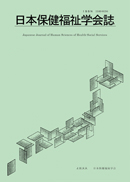Volume 3, Issue 1
Displaying 1-8 of 8 articles from this issue
- |<
- <
- 1
- >
- >|
-
Article type: Article
1996 Volume 3 Issue 1 Pages 1-2
Published: November 02, 1996
Released on J-STAGE: September 15, 2017
Download PDF (220K) -
Article type: Article
1996 Volume 3 Issue 1 Pages 3-11
Published: November 02, 1996
Released on J-STAGE: September 15, 2017
Download PDF (1044K) -
Article type: Article
1996 Volume 3 Issue 1 Pages 13-19
Published: November 02, 1996
Released on J-STAGE: September 15, 2017
Download PDF (855K) -
Article type: Article
1996 Volume 3 Issue 1 Pages 21-29
Published: November 02, 1996
Released on J-STAGE: September 15, 2017
Download PDF (829K) -
Article type: Article
1996 Volume 3 Issue 1 Pages 31-36
Published: November 02, 1996
Released on J-STAGE: September 15, 2017
Download PDF (738K) -
Article type: Article
1996 Volume 3 Issue 1 Pages 37-44
Published: November 02, 1996
Released on J-STAGE: September 15, 2017
Download PDF (843K) -
Article type: Article
1996 Volume 3 Issue 1 Pages 45-53
Published: November 02, 1996
Released on J-STAGE: September 15, 2017
Download PDF (926K) -
Article type: Article
1996 Volume 3 Issue 1 Pages 55-62
Published: November 02, 1996
Released on J-STAGE: September 15, 2017
Download PDF (874K)
- |<
- <
- 1
- >
- >|
